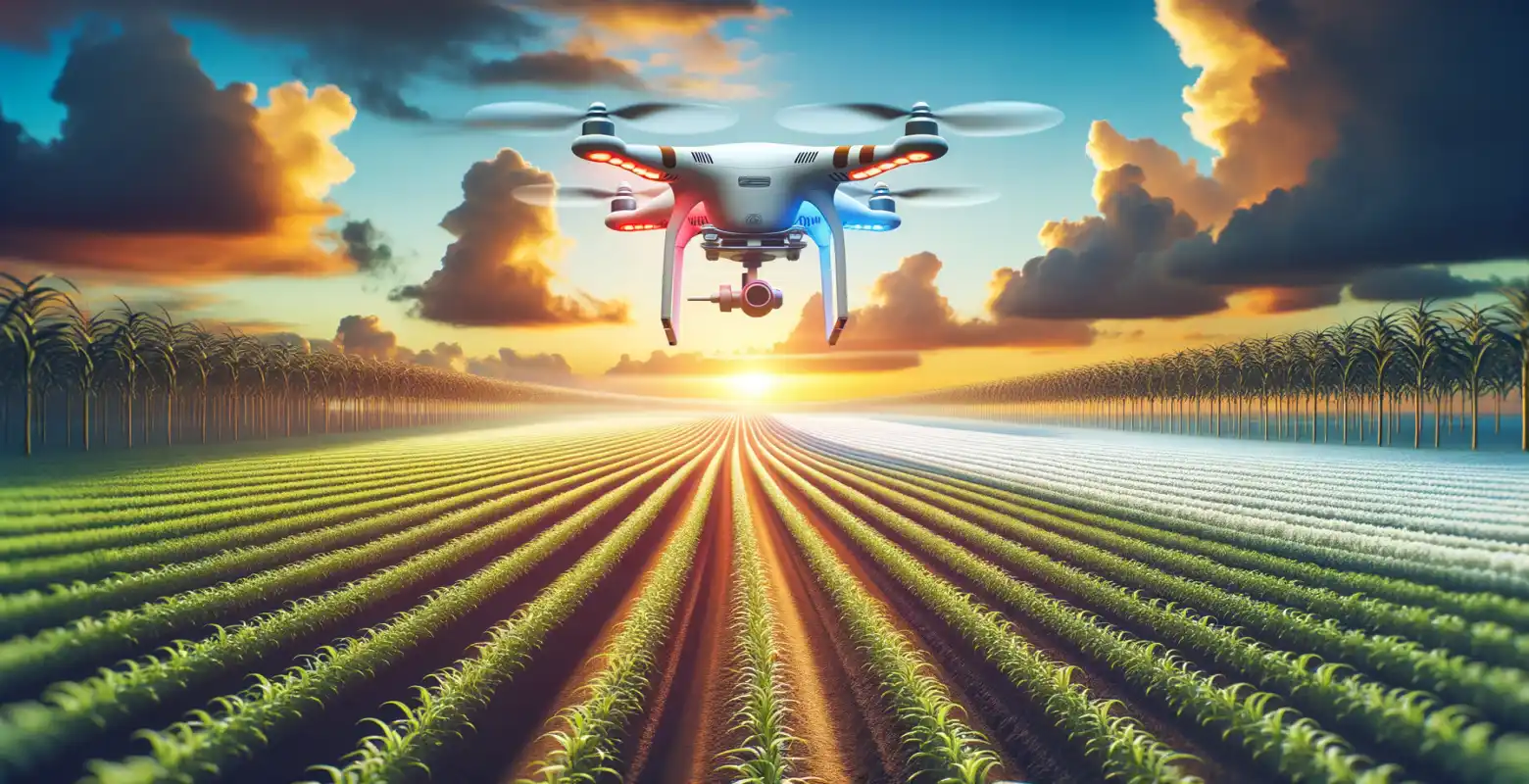The future of drones in precision agriculture
Introduction
Drones, also known as unmanned aerial vehicles, are gaining increasing popularity in various sectors of the economy. One of the areas where their application is becoming increasingly important is precision agriculture. Precision agriculture, which involves managing farms using advanced technologies, allows for increased production efficiency while simultaneously reducing environmental impact. In this context, drones play a key role by providing farmers with tools for precise monitoring and management of crops. In this article, we will examine the future of drones in precision agriculture, discussing their applications, benefits, challenges, and future trends.
Applications of Drones in Precision Agriculture
Drones in precision agriculture have a wide range of applications. Monitoring crops is one of the most common uses. With high-resolution cameras and multispectral and thermal sensors, drones can provide detailed data on the health of plants, soil moisture levels, and the presence of pests. This data is then analyzed, allowing farmers to make more informed decisions regarding irrigation, fertilization, or pesticide application.
Mapping terrain is another important function of drones. Using GPS and LIDAR technology, drones can create accurate 3D maps of agricultural fields. Such maps enable the identification of areas requiring special attention, which is extremely helpful in managing large agricultural areas.
Additionally, drones are used for seeding and fertilizing. With a precise navigation system, drones can efficiently distribute seeds and fertilizers in designated areas, which is particularly useful in hard-to-reach or uneven terrains.
Benefits of Using Drones in Agriculture
The use of drones in precision agriculture brings a number of benefits. Increased efficiency is one of the most important advantages. Through precise monitoring and management of crops, farmers can optimize water, fertilizer, and pesticide usage, leading to increased yields and reduced production costs.
Environmental impact reduction is another significant aspect. With precise data provided by drones, farmers can limit the use of chemicals to necessary areas, minimizing their impact on the environment and reducing the risk of soil and groundwater contamination.
Drones also contribute to better time management. Traditional methods of monitoring and managing crops are time-consuming and often require significant labor inputs. With drones, farmers can quickly and efficiently obtain the necessary information, allowing them to focus on other important aspects of agricultural activities.
Challenges Associated with Drone Utilization
Despite numerous benefits, the use of drones in precision agriculture also presents certain challenges. Costs of purchasing and maintaining equipment are one of the main limitations. High-quality drones and specialized data analysis software can be expensive, posing a barrier to smaller farms.
Legal regulations are another challenge. Many countries have strict regulations regarding drone usage, which may limit their application in agriculture. Often, a specialized license is required to operate drones and compliance with rules regarding flights over private and public areas is necessary.
Additionally, personnel training is necessary to effectively utilize drones and analyze collected data. Farmers need to be able to interpret the information provided by drones, which may require additional training and education.
Future Trends in Drone Applications
The future of drones in precision agriculture looks promising, and technological advancements open up new possibilities for their use. Integration with other technologies, such as artificial intelligence and the Internet of Things (IoT), can significantly enhance the potential of drones. AI can assist in even more precise data analysis, and IoT enables the integration of drones with other farm management systems.
Automation of operations is another development direction. Future drones may be equipped with advanced autonomous navigation systems, allowing them to operate independently without constant control by the operator. Such automation could revolutionize the way agricultural farms are managed.
Moreover, advancements in sensor technology will impact the future of drones. New types of sensors can provide even more precise data on the condition of crops, enabling farmers to better manage production.
Conclusion
Drones in precision agriculture have tremendous potential, which can contribute to increased efficiency in agricultural production and sustainable resource management. Despite existing challenges such as costs and legal regulations, the benefits of their application are significant. The future of drones in agriculture will likely be associated with further technological development, such as AI and IoT, opening up new opportunities for farmers worldwide. As technology continues to evolve, drones will become an integral part of modern agriculture, contributing to more sustainable and efficient resource management.






Number of comments: 0